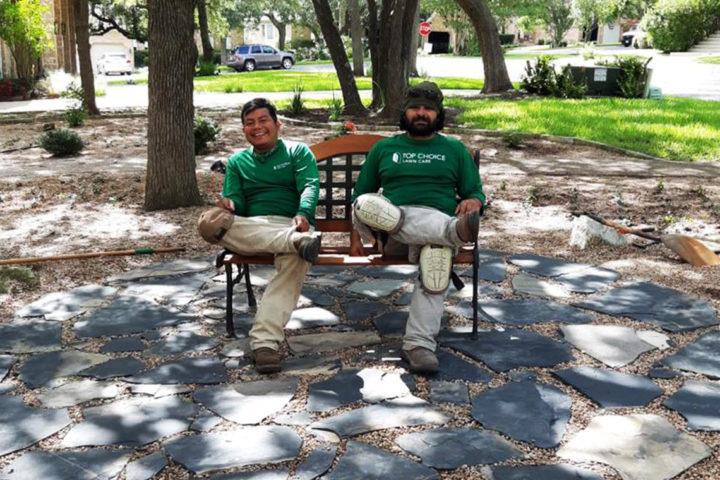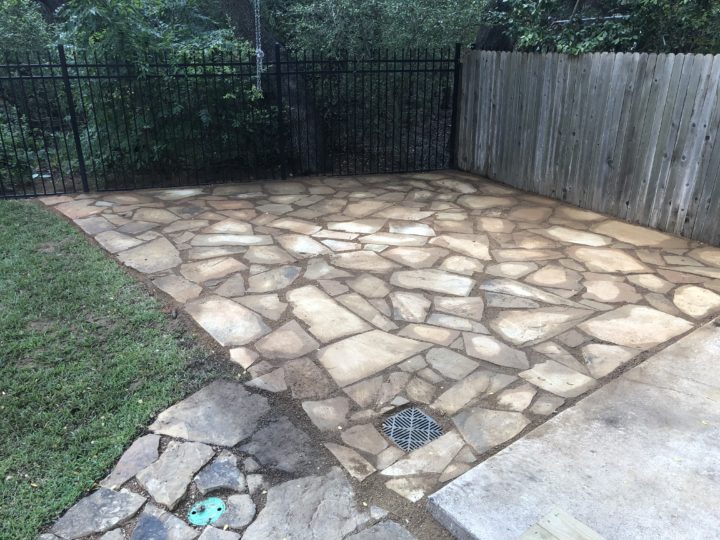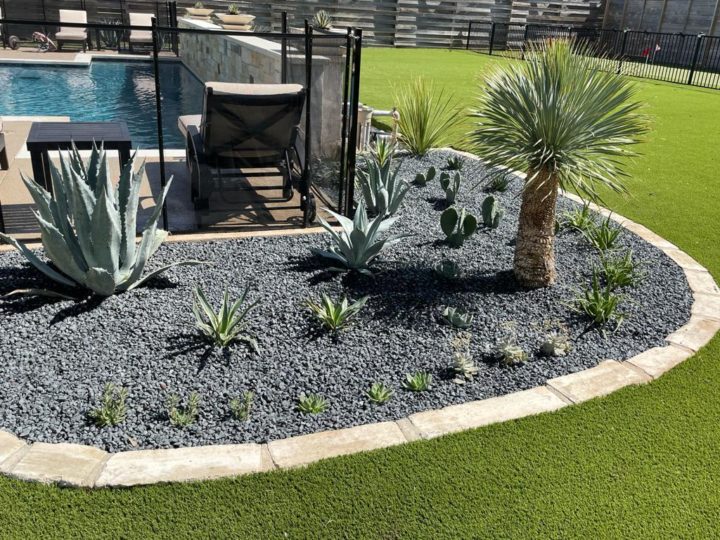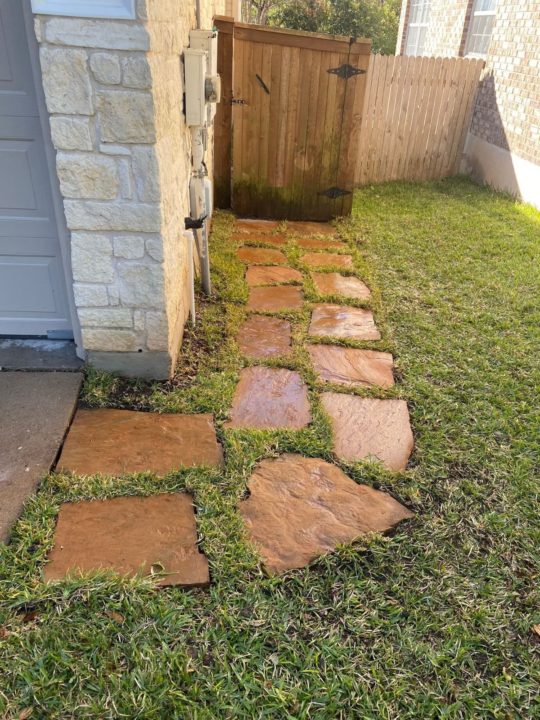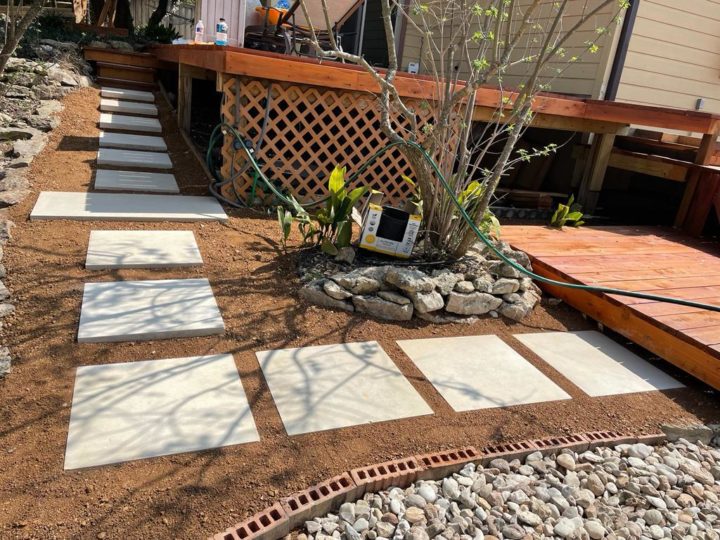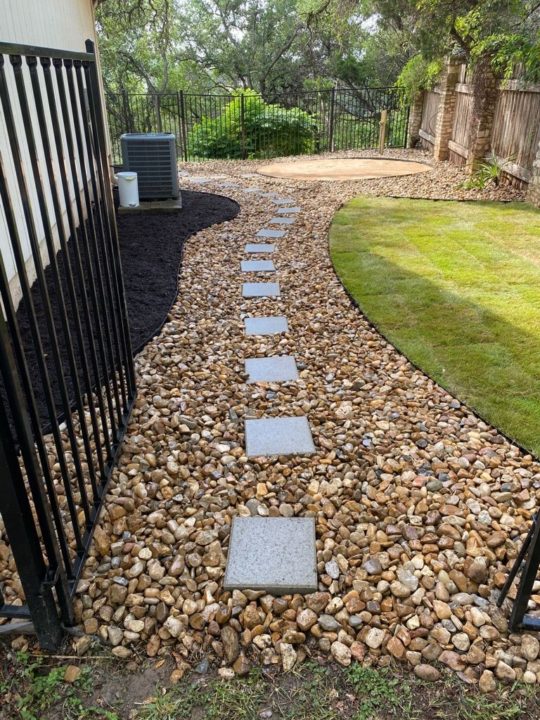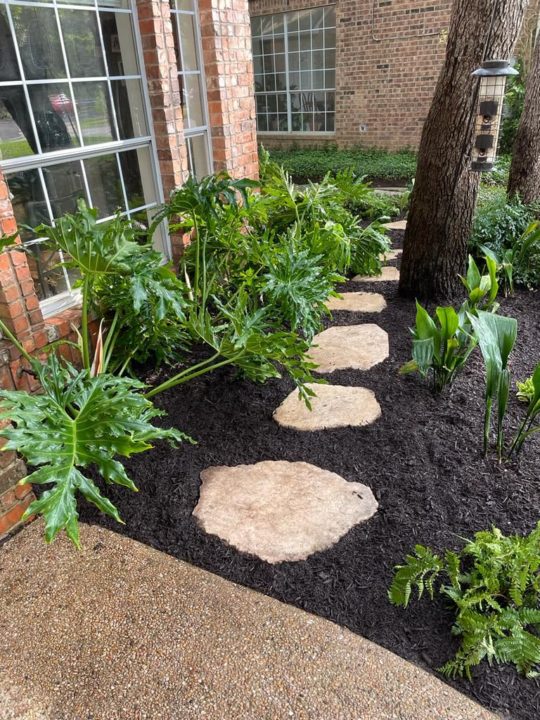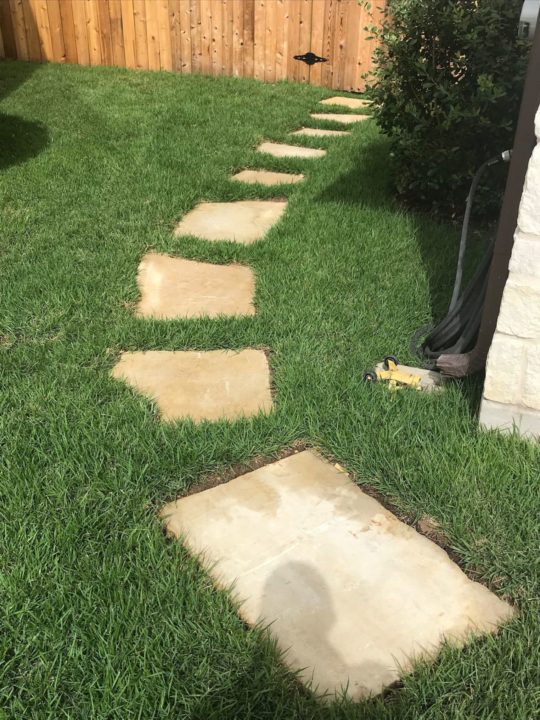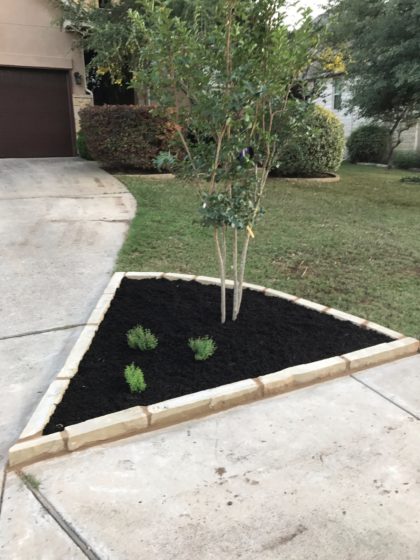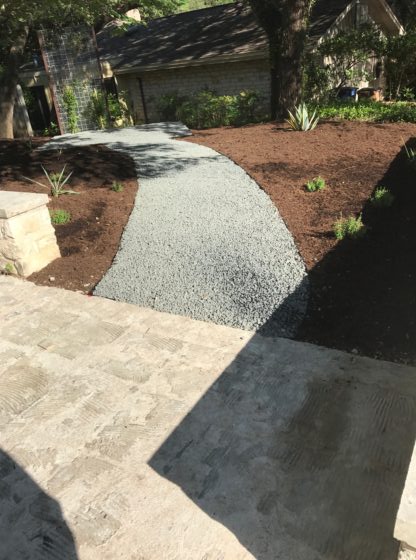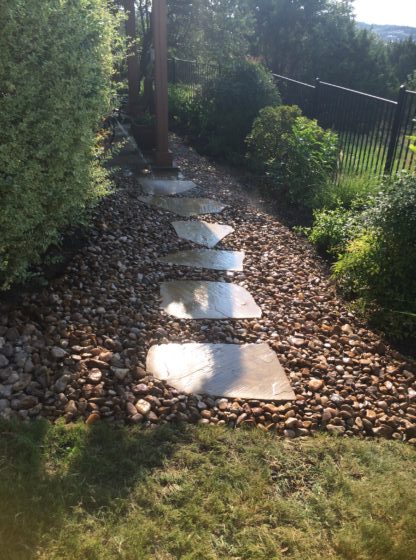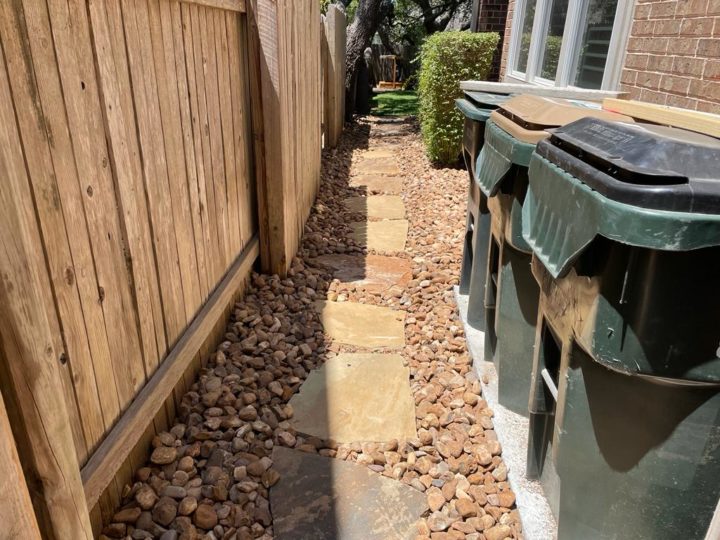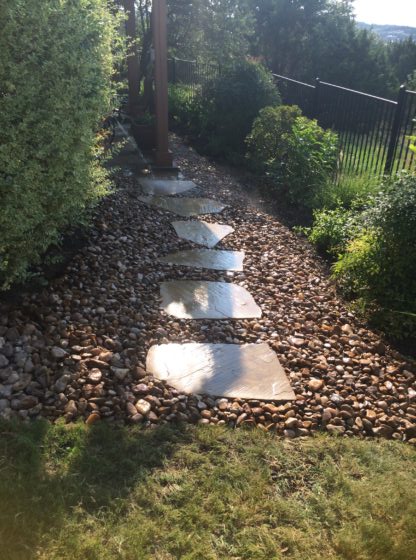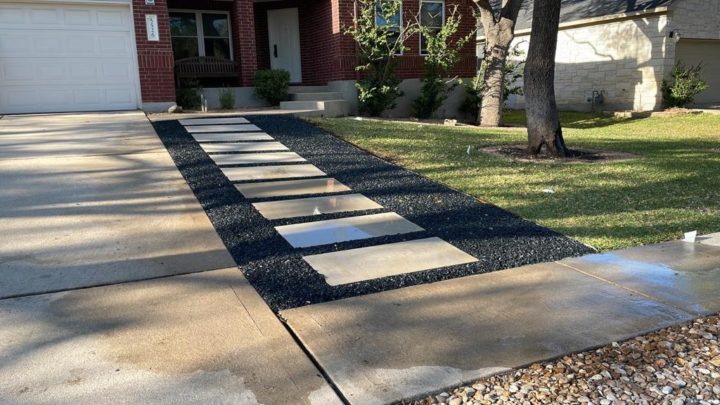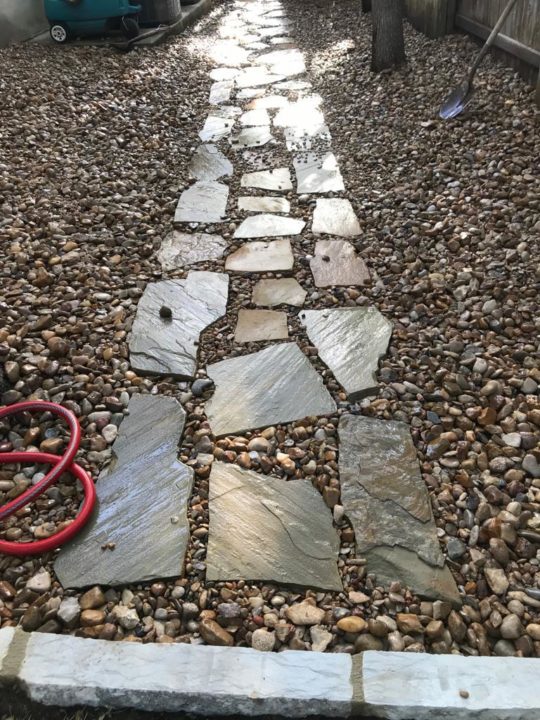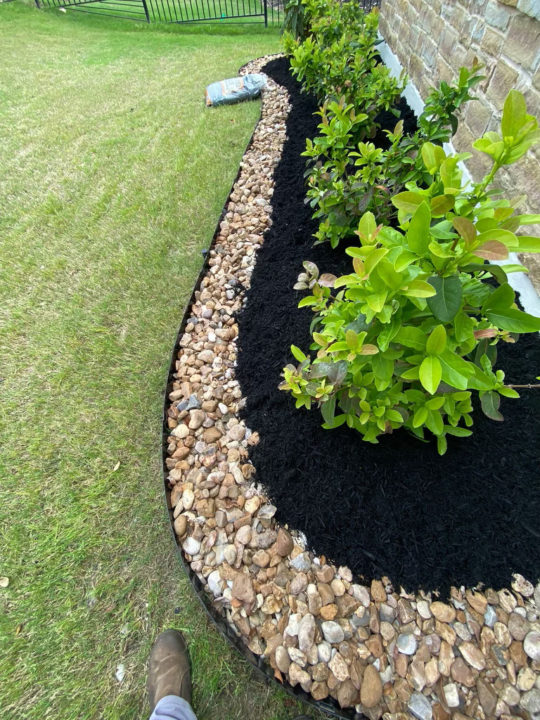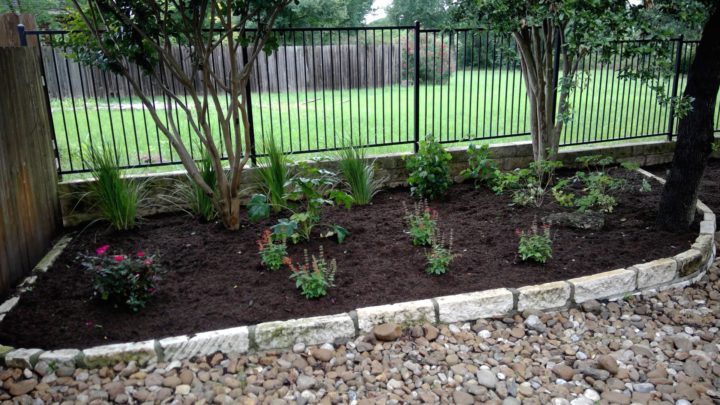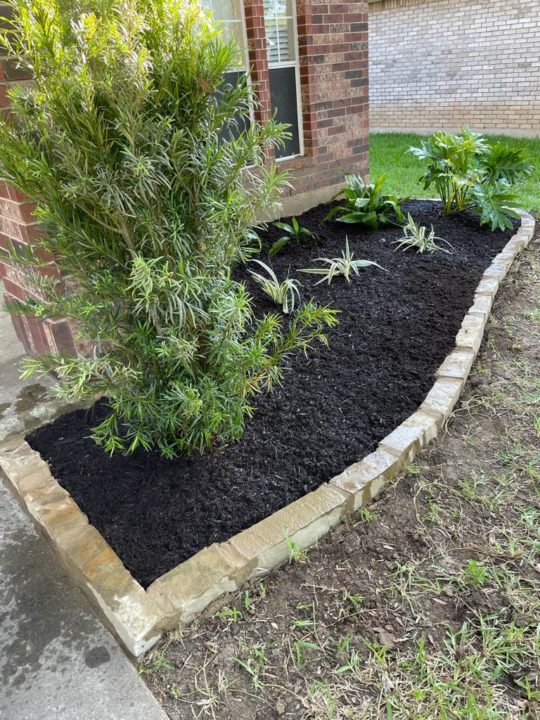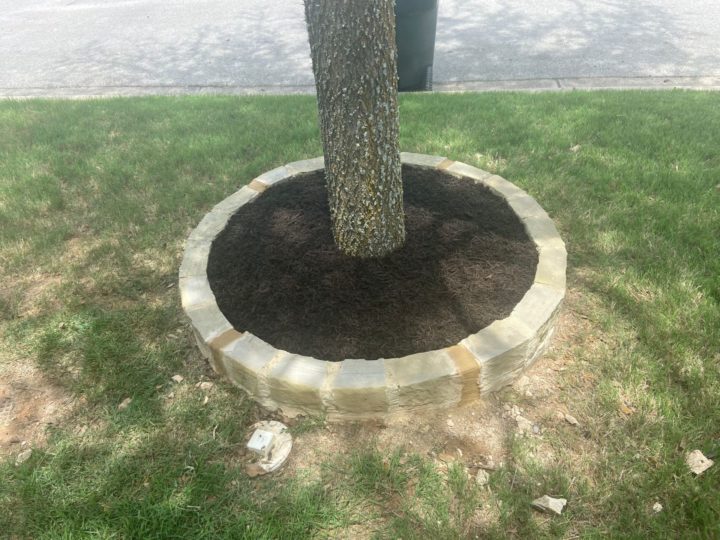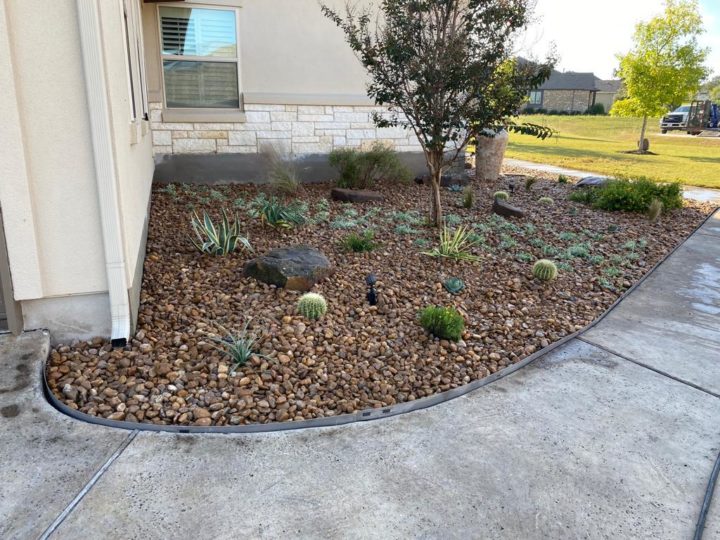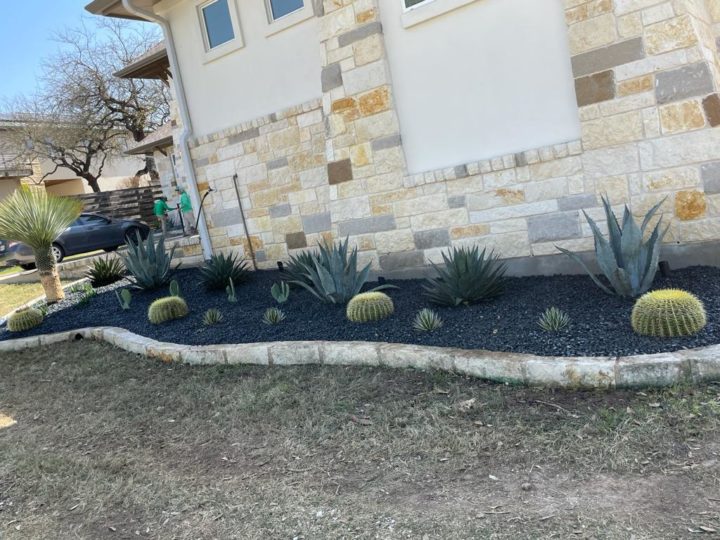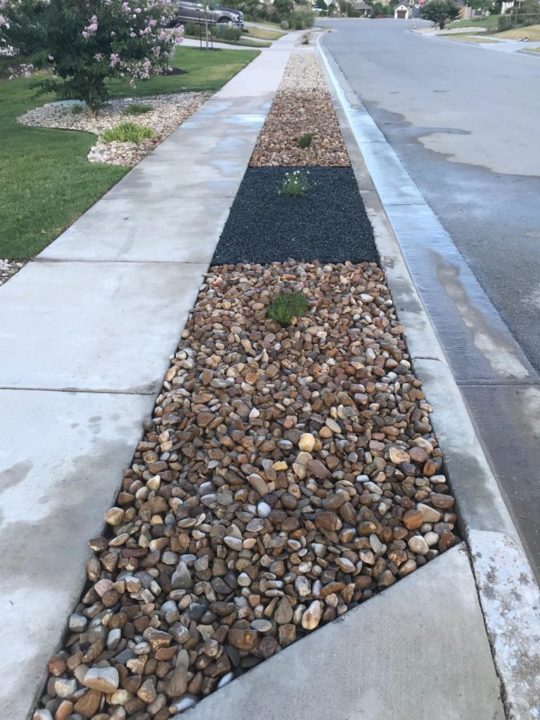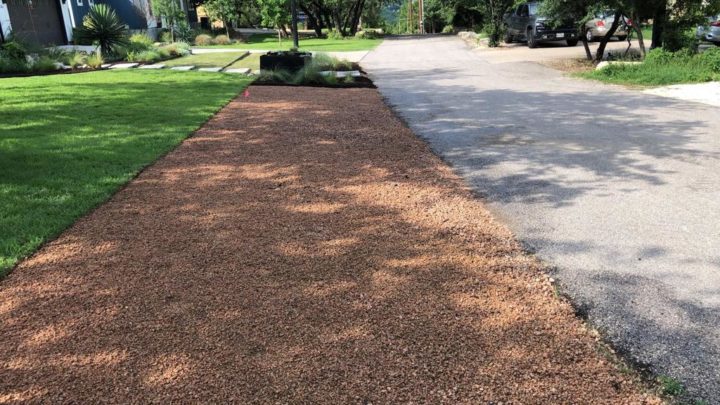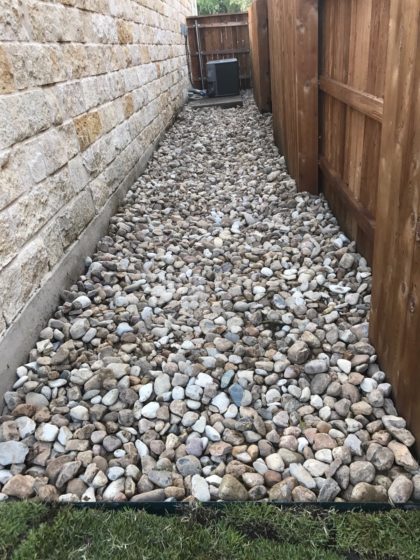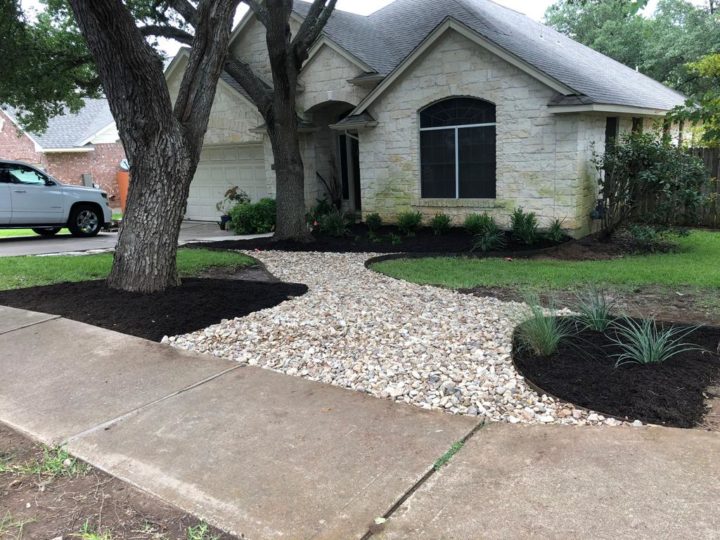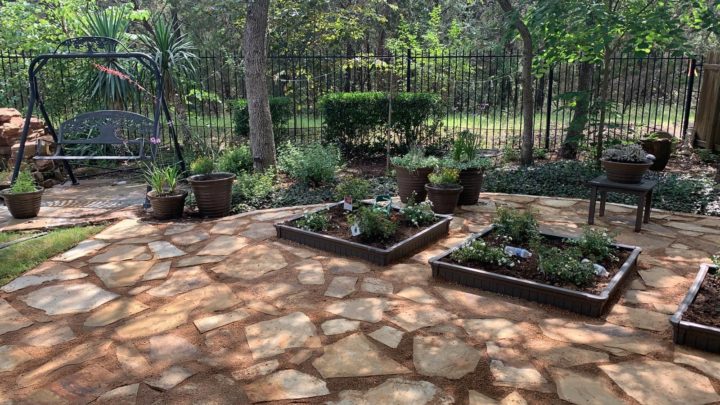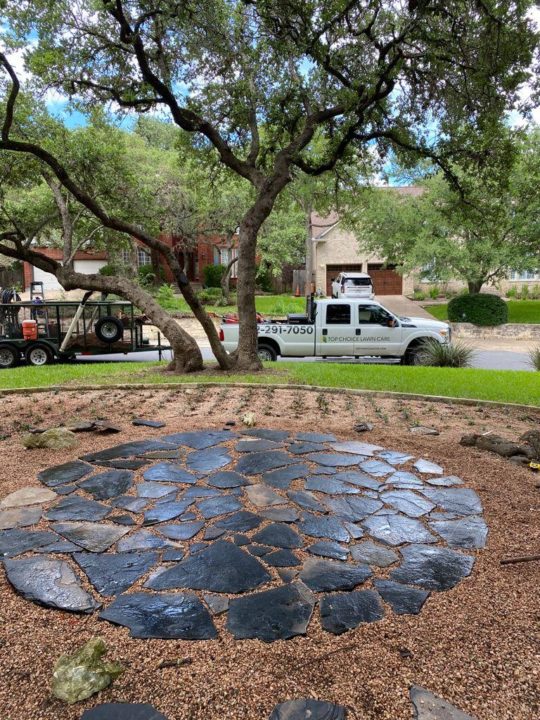Rocks and stone are a great way to improve your landscaping for years to come. They can add form and function to any yard ... and they're a great way to save water!
At Top Choice, we install rocks, gravel, and other types of xeriscape ground cover.
- River rock ground cover
- Flagstone patios
- Flagstone/sawed limestone stepping stones
- Crushed/decomposed granite paths
- Pea gravel for playscapes
- Limestone edging for your beds
Rock and xeriscape inspiration
We love enhancing yards with paths, patios, and seating areas. Rocks can help improve shady areas, get rid of muddy spots, reduce foot traffic damage, and improve drainage.
Other ways we can use rock include extending the sides of driveways, getting rid of the pointless strip of grass between sidewalk and street, and eliminating muddy areas in side yards that get too much structural shade.
Landscape Rock FAQs
Check out some of the top questions we get about rocks in landscaping. They might apply to you too!
- Edging (mortared limestone edge)
- Side yard (decrease mud)
- Boulders in beds as focal points
- Side of driveway (walkway for heavy traffic area)
- Patio or seating area
- Kids play area (pea gravel)
- Trashcan pad
- Path
- In a bed
- Tree well
- Etc
Yes. Rock is great for erosion control. More water = more erosion = need bigger rock.
Dogs love grass, but there are definitely scenarios that are better suited for rock.
- Muddy side yards: Rocks help with mud so your dog brings less mess inside
- Patrol paths: Dogs can kill grass and wear paths with frequent foot-traffic—just like people. But you can’t kill rocks!
- Bathroom spots: Weird spots in lawn from doggy poo/pee? Rocks don’t change color, die, etc.
Fence lines can be a great place for rocks especially if you have a pet that “patrols” the edges of the yard and kills the grass. or if there is heavy shade against a fence line so you can’t grow grass.
- Limestone
- Colorado river rock
- Texas Black Gravel
- Brazos River Rock
Look at our products page for some examples.
With a white house, we want to stay away from colors that are too dark or too red to create contrast. Let’s find a rock that carries mostly lighter tones (most river rocks and limestones) or warmer tones (like granite).
Another option would be to try to match or compliment the trim of your house. So if you have a gray trim, then try to use light gray tones in the rock.
It is important to note that rocks still need maintenance. You don’t just put in rocks and then forget about an area forever (sorry).
But there are things that can help decrease maintenance.
First, a landscape fabric (a special cloth under the rock) can help. We find that over time, even beds with these fabrics get weeds but it definitely slows the growth of weeds and prolongs the time between installation and maintenance.
Also - this may seem obvious, but don’t water the areas you don’t want weeds. If there aren’t plants, don’t waste the water. If there are plants, then try to only use drip irrigation or point application irrigation so that the other areas don’t have the moisture to grow weeds
No you do not.
We call this a “shovel cut edge”. Meaning we cut a defined line between the rock bed and the grass with…you guessed it…a shovel.
But remember that edging serves a purpose – 1) a defined line for maintenance 2) holds the rocks in place and the grass out. 3) a good edge can be aesthetically pleasing.
Yes. There are lots of scenarios that benefit from rocks in beds rather than mulch.
We often use rock in the bed with the highest water run off - mulch would just get carried away.
We also install it in beds that have a “xeric” design with cacti and agaves.
There are even times when mixing rock and mulch is a great look.
Nope. Won’t kill the tree.
Mulch still have some advantages though. Mulch breaks down into needed nutrients for the tree (rocks don’t).
Use a blower. The more you are on top of it, the easier it is.
- Don’t put “perfect throwing rocks” in a yard with kids who love to throw rocks.
- Don’t use small rocks if you have scratchable floors. Decomposed granite tends to catch in your shoes and can scratch a fancy hardwood floor.
- Don’t put angular rocks in an area where kids like to run barefoot or where dogs run.
- Don’t put rounded rock in an area where people often walk…more on this in the next question
It matters.
Angular rock “locks together” creating a more stable surface for paths, patios, walkways, driveways, etc.
Rounded rock has a softer look and it rolls off of itself. Use this more for decorative areas, ground cover or areas with very light foot traffic.
"I don’t want a blood diamond situation on my hands."
This was a great question from a jokester of a friend.
But seriously…the vast majority of these rocks come from local quarries. It's not very cost-effective to ship heavy rocks around the country/world.
You don’t need to “redo the rocks” very often. Maybe add another light layer every few years (rocks tend to disappear over time due to human/pet interaction and erosion).
But you will need to maintain the rock beds. Weeds still grow. Leaves still get blown into an area.
Yes, rocks can provide long-term irrigation savings… You don’t have to water rocks.
But keep in mind that you may have to make some near-term adjustments to heads and zones to avoid wasting water in your new rocky areas.
This is pretty easy for a competent irrigator to cap or move.
The answer here is highly dependent upon the scenario, but here are some general ideas:
- For drainage assistance or erosion control: Larger is usually better. By larger I mean 3-4 inches. This allows for water to flow through the rock but also is large enough not to get washed away.
- For a dry creek bed: we typically mix sizes to make it look more realistic.
- For kids areas or dog runs: You want smaller rock that is rounded. 1/4 inch pea gravel.
Make sure the rock is large enough that it won’t get stuck in the bottom of shoes.
People love grass. But people REALLY value beauty and functionality.
Rock likely isn’t the full-yard solution…but it is a solution for areas in every yard.
Most suppliers measure rock in “Cubic yards,” so solve for that.
- Measure the area’s length, width, and desired depth. (We recommend 3-4 inches).
- Use maths to get the volume in cubic feet.
- Convert to cubic yards (1 cubic yard = 27 cubic feet) to determine how much rock to order.
Why not grass?
Despite your best efforts (and even our professional help), some areas are just not well suited for grass.
High-traffic areas can quickly create ruts, paths, and bare spots. People and pets are hard on grass. They compact the soil and make it tough for grass to grow. Core aeration can help this compaction, but sometimes it's better to go with the flow and create a path with stones or pavers.
Shady areas are also tough on grass. You can shed a little light on the situation by opening up your canopy with tree trimming. Sometimes you might need another type of grass altogether. If that doesn't cut it, shady areas can be a great place for a patio, sitting area, or rocky groundcover.
Upgrade your lawn with rocks, gravel, and more
Contact us to learn more about flagstone patios, rock, and xeriscaping.


